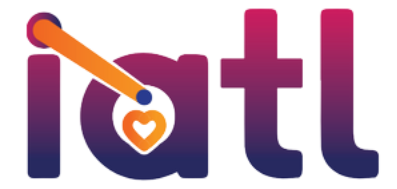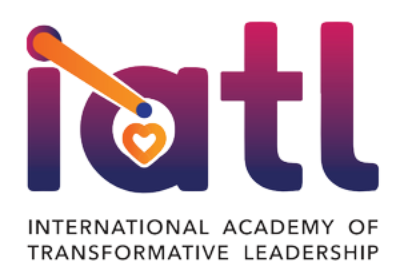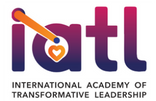The Consequences of the Global ‘Return to Work’ Drive
With the Covid-19 pandemic losing its grip on the world, corporations across the globe are looking to woo their employees back to the office via a massive “Return to Work” movement with mixed results. While some organisations are insisting on 100% work from office with additional incentives like variable pay and additional leaves, most others are willing to adopt the hybrid mode in an effort to combine the best of work-from-home and in-office work practices. The key question that remains to be answered is whether organisations will be able to create a working model that is future proof while attracting and retaining the best talent in the industry.
In a recent development, Wipro sacked 300 employees in India for ‘moonlighting’. Moonlighting is taking up another work assignment apart from one’s fulltime job. Most organisations have stringent rules about dual employment ranging from strict disciplinary action to termination. Rishad Premji, chairman of Wipro termed moonlighting as ‘cheating’ in a tweet and has taken a firm stand against those employees who have been practicing it. At the same time, leaders like Mohandas Pai, ex-Director Infosys and C P Gurnani, CEO of Tech Mahindra are more open to the practice and have invited employees to be open about it and disclose it to their supervisors. While the jury is still out, what is it that supervisors can do to win the confidence of their team members and ensure that the team is working towards the best interest of the organisation?
Perhaps, the work-from-home situation made it easier for employees to moonlight in their spare time, especially in the IT/ITES industry. And perhaps it is the uncertainty in the organisation – concerns around job security and financial stability during the pandemic, that motivated employees to take up a second job. According to a study by Oracle in association with Workplace Intelligence, an HR and advisory firm, in January 2022, 44% employees are experiencing Financial Stress at the workplace. It is a choice that employees may have made based on their personal circumstances. Many organisations on the other hand have resorted to hiring temporary staff for project-based assignments due to lack of skilled resources in the market, giving rise to opportunities for moonlighting for full-time employees. However, how do organisations (where the employee is a full-timer) ensure that there are no conflicts of interest, especially when the employee ends up working for direct competition.
Most organisations are responding to the situation with stricter rules and guidelines. Many have made it mandatory for employees to attend office physically for at least 3 days a week. Others are issuing warnings about strict disciplinary actions leading to termination for disregarding return to work norms. Many have developed more stringent systems of monitoring employees. As Adam Grant, American author and professor of organisational psychology at Wharton School, University of Pennsylvania, observes, “The number of workplaces using surveillance software to track employees has ballooned. If you have to monitor people’s keystrokes, you’ve failed at management.”
What is it that leaders and supervisors can do to “manage” their people? How do they ensure higher levels of productivity? Should they focus more on successfully engaging their employees? After all, there is an entire gamut of studies that show that higher employee engagement scores lead to improved business results in aggregate. However, is there a linear correlation between engagement and productivity? In other words, does higher levels of engagement always lead to higher productivity at an individual level? Recent studies conducted by Ryan Fuller, head of Workplace Analytics in Microsoft, and Nina Shikaloff, Principal Project Manager, Microsoft, show that as much as 25% employees with a high engagement score display behaviors amounting to low productivity (as cited in a Harvard Business Review article).
Leaders and supervisors need to works towards a right balance of Engagement and Productivity. We, at IATL, define an engaged employee as one who has:
- clarity of vision
- is able to access their inner energy to fuel the vision
- is able to experience learning and growth through activities that they undertake
A Productive individual is one who can:
- access their creative zone and come up with solutions to fulfill their vision
- develop a razor-sharp focus towards outcomes
It is the job of the leaders and supervisors to create a sustainable work environment that supports the right balance. Borrowing from the Focus-Energy Matrix developed by Heike Bruch and Sumantra Ghoshal, output can be defined by a balance of the intensity of focus and the quality of energy experienced by the employee at work.
Intensity of focus may be defined as an intrinsic desire to produce results or an extrinsic pressure to perform. The quality of energy may be defined as the sum total of positive and negative emotions experienced by individuals at the workplace. Low quality of energy is characterized by emotions like insecurity, fear, blame, guilt etc. whereas high quality of energy is marked by emotions like appreciation, care, connect, passion and love.
In an organisation where there is –
- low intensity of focus by way of undefined objectives or lack of performance measurement systems, coupled with low quality of energy, people are prone to procrastinate or are internally resigned resulting in minimum compliance and poor quality of work
- high intensity of focus by way of deadlines and pressure to perform coupled with low quality of energy, people experience a lack of connect with the work leading to burnout
- low intensity of focus by way of lack of well-defined goals or too many goals to be achieved, coupled with high quality of energy, people are easily distracted and are all over the place. They often expend their energies in various activities without evaluating their merits resulting in very little meaningful output
- high intensity of focus byway of clarity of vision and well-defined goals and objectives coupled with high quality of energy results in Purposefulness where employees are able to contribute meaningfully in a timebound manner
In the context of rapidly changing circumstances, leaders need to constantly redefine their vision and realign employees to the new vision. Managers need to help employees align their personal vision with that of the organization in order to prevent conflicts of interest. When people feel valued by the organisation, involved in shaping the future of the organization, they develop a sense of pride and belonging to the organization. Under the circumstances they would be willing to stretch and go above and beyond for the benefit of the organization in times of crisis. Such employees would be less likely to compromise the interest of the organisation for short term personal monetary gains.
Leaders need to reciprocate by displaying trust and care for the employees. Employees need to feel acknowledged; they need to feel heard and understood and fully supported in times of need. Are leaders able to create this atmosphere of trust and care or are most employees operating from a space of fear and insecurity in the organization? How will this shift happen in the emotional and cognitive culture of the organization?
When leaders operate from the Core – the deepest aspect of their being which is the seat of the Universal Consciousness – they are able to connect with their people at more than just the intellectual level. Such leaders develop trust by a constant display of transparency and congruence between their words and actions. At an emotional level, they have the emotional stability and maturity to experience genuine care for others without becoming emotionally entangled in their struggles. They are able to provide clear guidance and a space for safe expression through deep listening. Core-led Leaders experience inner silence leading to acceptance without judgement. Employees feel free to discuss their financial situation and need for additional income. They can disclose and discuss the legal consequences and ethical concerns of project-based job offers they may have received and seek support from their leader. They experience psychological safety in the presence of these Core-led Leaders leading to courageous, result-orientated actions. Core-led Leaders are able to channelize the power of their Core to fuel their own passion towards their vision. They radiate positivity and stability and are a powerful source of energy and direction for the people around them.
Each one of us have the potential for developing ourselves into Core-led Leaders by building a strong connect with our Core. There is no one set way of connecting with the Core. Each of us are created as unique individuals and have our own unique ways of connecting. This is an invitation to explore, experiment and discover what helps us connect with the Core most strongly. The more we connect the more we will be able to manifest those qualities of the Core that makes us powerful Core-led Leaders who are able to inspire their people to give their very best to the organization they work for.



